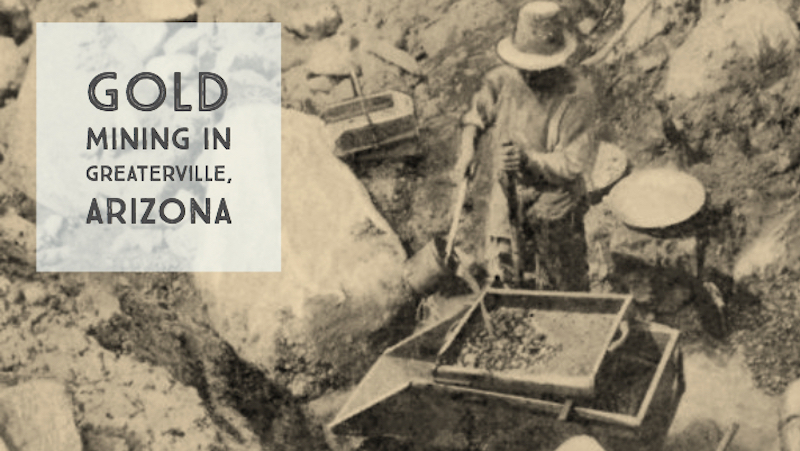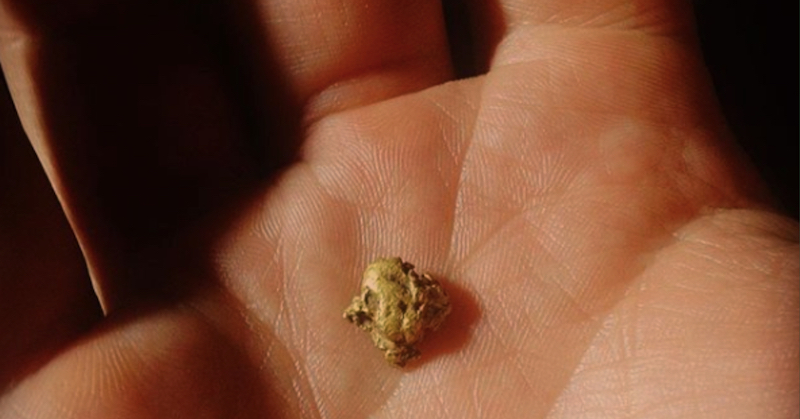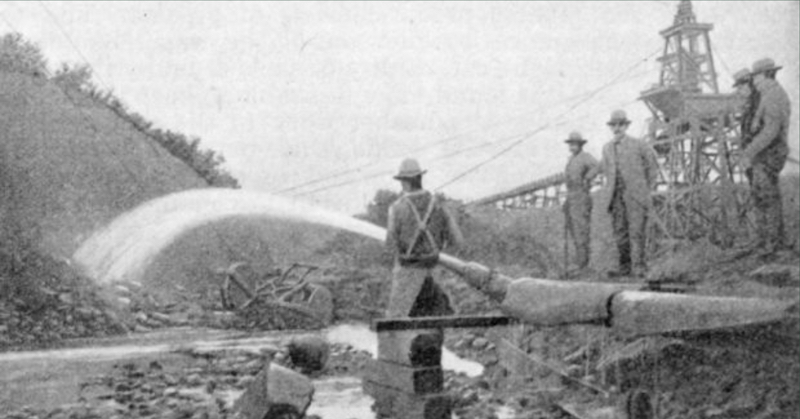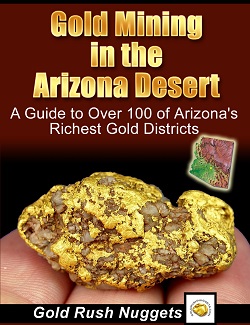
Greaterville is a little mining town located in the southern part of Arizona, about 45 miles southeast of Tucson, in the mountains of Santa Rita’s east slope.
The mining area that came to be known as Greaterville came into existence when placer gold deposits were discovered in the region in 1874 by A. Smith. It was said that many of the first miners were recovering $10 of gold per day, a considerably rich deposit by any standards. Those first men were using the most basic equipment to find gold off the bedrock of this harsh desert mining district.
Development of the Greaterville Area
The news about gold discovery in Greaterville kept spreading like wildfire. There were already lots of miners exploring the Mojave Desert of Arizona and California. When news of the Greaterville gold strike occurred, thousands of men headed there by any means necessary.
Within a year, the Greaterville Mining District was established March, 1875. By this time, mining was in full force throughout the Santa Rita Mountains. News of miners finding large gold nuggets were being reported. One was reportedly over 37 ounces, along other many nuggets were value ranged between $1 and $50 each (at 1875 prices).
With the passage of time the mining industry started attracting other businesses. You could find any of the necessary businesses that invariably would spring up when a mining camp turned into a full blown town. Saloons and dance halls were some of the most important for social activity in this remote mining town.

Mining in the Hot, Dry Arizona Desert
During the days mining was at its peak in Greaterville, the miners used a number of methods and techniques to extract the gold from Earth, but they faced a lot of challenges. With very limited water in the Southern Arizona desert, good prospecting was often limited to the few times when water was present. After rains and storms, the desert washes would be refreshed with water, and miners would use it to process the gravels.
Among the most productive techniques used by the early miners in Greaterville were rockers or “cradles.” These were popular because they could operate with very limited water. Miners would build dams to capture water, then use it to was the gravels in their rockers.
Even during the best years, there were always challenges with lack of water water. This plagued this mining district for decades. Some miners would even pack in water from surrounding areas on the backs of burros, but this was a difficult and time consuming process. Mining activities did not thrive between 1886 and 1900, as the richest placer gold had been recovered, and the lack of water prevented efficient mining to take place.
As if that was not enough reasons to limit mining operations, the placers ware also covered in sizable deposits of clay as well as caliche which made the mining operations even more challenging. Even though there was still good gold in the area, many of the miners simply left because it was too difficult to work.
Water Comes to the Greaterville Mines
With the passage of time, there came a time when Santa Rita Water Mining Company, along with a certain group of investors which included the millionaire George B. McAneny came up with an idea to bring water to the desert. They knew that hydraulic mining had produced desirable results in the placer fields of California, but where would it come from?
The miners who were so hungry for gold decide to resume the mining operations once again in Greaterville.
When the decision to revamp the mining industry in Greaterville had been made, the investors spent about $175,000 dollars to set up a water system to the mines. Once the water arrived, it could displace huge amounts of gravel overburden by using hydraulic mining. They constructed waterways that tapped into the streams located in the south of Santa Rita Mountains.
After the water system had been established, the placer mines in Greaterville started using water in their operations. The pipelines as well the tunnels were constructed to carry water to the points of operation. Dams were also constructed to retain water in the canyons that were nearby.

Hydraulic mining created some short-lived excitement in Greaterville, but it was still only available sporadically. Difficult mining conditions were always something to contend with in Arizona.
Also Read: This Arizona Gold Mine was the Richest in the State
And: Early Spring Gold Prospecting in the Desert
Water Challenges Continue to Plague the Miners
The mining operations by hydraulic system was not very effective due to insufficient water supply in some seasons. The water simply wasn’t reliable enough, and was only provided by streams that could only flow during the rainy season. They would use it as efficiently as they could, but miners were constantly in need of more water to process the gold from the gravel. As a result of these challenges, Greaterville continued going downhill.
In the year 1914, Greaterville Dredge Gold Mining made some efforts to buy about 110 acres of property with the intent to obtain water from the local wells. Unfortunately it never happened. Some men still worked the remote desert gullies, but most of them moved on. The Great Depression brought some new interest to gold mining because of the lack of work, but making a living from the Greaterville placers was still very difficult.
Despite the many challenges that prevented Greaterville from becoming a true world-class gold camp, it still provided rich ground for miners for many decades. It suffered the fate of so many mining towns. Even with the water challenges it was still evident that the gold was being played out as the years went on.

Is There Any Gold Left?
The short answer is ABSOLUTELY! In fact, the challenges faced by the early miners and their crude mining methods could actually be advantageous to a modern-day gold prospector. This is because we have different prospecting equipment that we can use.
Lots of good gold has been found by metal detectorists in the dry gullies around Greaterville. In fact the gold-bearing gravels can be found all throughout what is now the Coronado National Forest. The actual townsite of Greaterville is actually on private property, but most of the surrounding mountains are public land. Lots of this land is heavily claimed now so you need to go prepared, but there are certainly areas out there that you can still find some gold.
Next: Gold in the Mojave Desert of Arizona & California

